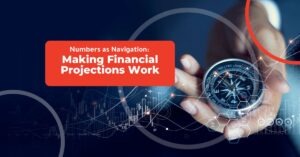Tech, Transitions and Tomorrow: How We’re All Technology Companies Now
Aug 3, 2022
You – yes you, whatever you do – have a technology company. Some of us are creating solutions that require certain technologies to function, some of us are developing those technologies, and all of us are using, benefiting from, or managing technologies in our business. More importantly, our customers have increasing expectations of how we use technology, from easier customer service to tracking or notifications to user experience. In this article, we’re exploring business in technology and where we’re headed. From Blockchain to subscription and licensing models, we’re all on the cusp of tremendous opportunity – if we know how to leverage it.
Tech is Trending
In claiming that you have a technology company, we need to explain that a bit.
It wasn’t long ago that technology in the business context was the stuff of the CIO, CTO or IT departments. Concerns about using and securing technology were some other department’s role. In the past, businesses were limited by what they could do with the technology available. Hence the need for departments and specialists to manage it. Today anybody with a smartphone can connect with customers on a global scale, automate processes that used to take hours or days, and even create new products or services that would have never been possible before. Some easy examples include:
- Using social media as a marketing tool
- Automating tasks such as bookkeeping and accounting
- Having a robust remote workforce
- Instant access to files, reports, business intelligence and more
Tech is Troublesome
In earlier eras, our primary tech concerns were largely institutional. Those same technology departments and specialists were concerned about uptime and outages, data redundancy, latency, scalability, speed and security. None of these concerns have gone away, and the potential for trouble has dramatically increased. In the same way, tech empowers each of us all the time, it also introduces potential problems that we’re still developing solutions and skill sets to manage:
- Small businesses and individuals are increasingly at risk of being hacked, phished or scammed
- Social media abuse, misuse or just honest confusion can bring down the reputation of your business
- Mitigating risks like these require new training, tools and talent that can be expensive
Tech is Two-Sided
In other words, the realities of how each of us uses technology every day overlap our personal and business lives like never before. We’re more empowered and more at risk than ever before. And about the time we feel like we’re getting a handle on today something new emerges.
- Live chat is a more satisfying customer service mechanism than other avenues like phone support or accessing help documents. Is your company using live chat for sales or support?
- “Twitter-shaming” makes it easy for frustrated customers to vent on social media, potentially escalating situations that otherwise would be easier to manage.
- Communication platforms like Slack, Zoom or Microsoft Teams (to name just a few) have made it easier than ever to get collaborative work done between virtually anyone, virtually anywhere.
Tech is Transformational
Just 30 years ago an office like yours was still using typewriters. 30 years from now business may be equally as different, as the adoption of profound technology advancements are underway. The future of the business world is here, and it’s going to change the way we do business.
VR
Virtual Reality is an immersive experience that creates a simulated environment with which users can interact. It has been used already for gaming, engineering, medical training, education and more.
AR
Augmented Reality is an interactive experience where digital content is overlaid on top of a live view of the physical world. Its applications include everything from construction to design, from prototyping to training.
AI
Artificial intelligence deals with the creation and study of intelligent systems by machines and computers, simulating human intelligence processes. Some sectors where AI is being heavily invested in include customer service, sales, marketing, finance and manufacturing.
Machine Learning
Machine learning is a subset of artificial intelligence that provides computers with the ability to learn without being explicitly programmed. Machine learning uses data from past experiences or surrounding data to make decisions and predictions about future events, create interpretations, model sophisticated forecasts and even create digital realms and “spaces” that could be the future of workplaces. Machine learning is now being used in many different industries to improve business processes and predictive analytics, increase efficiency, segment customers and create new opportunities for innovation.
Blockchain
Blockchain technology provides a decentralized public ledger that records transactions between two parties efficiently and in a verifiable and permanent way. Blockchain technology can be used for transactions of any kind: money, goods or other assets like intellectual property or voting rights.
Tech In Your Business, Your Business in Tech
You don’t need to understand or even care about any of this stuff for it to be relevant to your business. Still, some of what’s coming can still seem abstract or conceptual. But technologies like these are informing the new customer and revenue relationships that might directly impact you immediately.
The Subscription Economy
The subscription economy is a new economic model that is based on the idea of recurring revenue. This model is not just about maximizing revenue. It also focuses on providing the best experience for customers and building long-term relationships with them.
This model can be applied to any type of business, from small-scale companies to large corporations. Businesses can benefit from this model by increasing customer loyalty and decreasing marketing costs.
What’s powering much of the subscription economy? Social media, predictive analytics and AI (to drive customer service and make recommendations), among other technologies. Powered by the pandemic, more companies than ever are transitioning at least some of their revenue models to subscription-based services.
The Licensing Economy
The licensing economy is a business model that allows people to use products or services without paying for them upfront. Instead, they pay for the right to use it over time and in different ways. Licensing allows companies to generate revenue without the need for large initial investments or large amounts of capital because revenue can be shared for individual products or services, as well as resources and ideas. For example, when you license your content to other people you are giving them permission to use and monetize your content in return for a portion of their future earnings. Powering the licensing economy is – you guessed it – social media. Collaborations among brands and influencers or sharing content over YouTube or TikTok are increasingly popular, especially among Gen-Z and younger demographics.
NFTs
Finally, maybe the biggest buzzword of the 2020’s (and a phrase you’d likely never heard of before 2020) is nonfungible tokens or NFTs. NFTs are a new way to create and transfer value in the digital world. They are also known as crypto-collectibles or crypto art, depending on the type of token.
Nonfungible basically means these assets are not interchangeable and cannot be broken down into smaller units. NFTs have the potential to revolutionize the way we think about digital assets.
The future of NFTs is still uncertain, but there are many potential use cases for them. For example, they can be used in games to make game assets more valuable and unique. They could also be used to store identity data or personal information on the blockchain and have it verified by third parties like universities or governments.
Your Business and Technology
Any one of these emerging technologies can interrupt, disrupt, stimulate or innovate your business, no matter what it is. Our guidance is to think and operate proactively about what these changes can mean for your business.
- How are your systems and processes running now? What are potential fault or failure points? Automation and software advantages could likely make a difference.
- What’s your revenue model, and how sustainable is it for tomorrow? Some organizations haven’t looked critically at their revenue models since the day they were founded. Strategically connect your revenue models to growing goals and changing business dynamics. To stay relevant, your revenue models must be relevant.
- Review your financial relationships. Everything from financing, investing, lending and more is being shaped by emerging fintech and innovations like those we’ve discussed. Having a solid relationship with your banker will always be important, but diversifying relationships will have advantages.
- Expand (or build) your team. Financial experts, technologists, savvy social media managers, content producers and others will be key partners in tomorrow’s business landscape. Educate yourself and others on your team, and surround yourself with capable, experienced and curious professionals.


